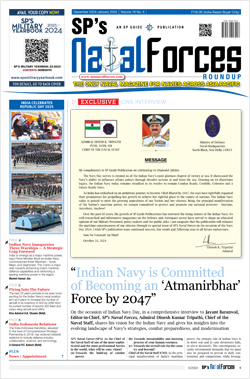INDIAN ARMED FORCES CHIEFS ON OUR RELENTLESS AND FOCUSED PUBLISHING EFFORTS

The insightful articles, inspiring narrations and analytical perspectives presented by the Editorial Team, establish an alluring connect with the reader. My compliments and best wishes to SP Guide Publications.

"Over the past 60 years, the growth of SP Guide Publications has mirrored the rising stature of Indian Navy. Its well-researched and informative magazines on Defence and Aerospace sector have served to shape an educated opinion of our military personnel, policy makers and the public alike. I wish SP's Publication team continued success, fair winds and following seas in all future endeavour!"

Since, its inception in 1964, SP Guide Publications has consistently demonstrated commitment to high-quality journalism in the aerospace and defence sectors, earning a well-deserved reputation as Asia's largest media house in this domain. I wish SP Guide Publications continued success in its pursuit of excellence.
- MoD initiates comprehensive review of Defence Acquisition Procedure 2020, pushes for defence reforms
- G7: The Swansong
- Kalinga Connect: South Asia to Polynesia
- Advanced MRSAM for India for a greater firepower
- Must Credit DRDO for Operation Sindoor, now what is next for defence R&D?
- Operation Sindoor | Day 2 DGMOs Briefing
- Operation Sindoor: Resolute yet Restrained
India China Stand-off in June 2020
The nation needs to be concerned about the overall strategic and economic relations with China which have been in turmoil in the wake of the COVID-19 pandemic.
 |
The Author is Former Air Officer Commanding-in-Chief of Training Command, IAF |
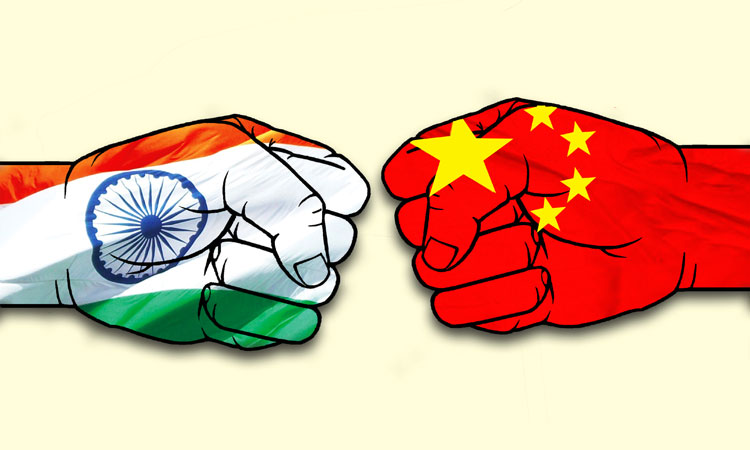
On the night of June 15 - 16, this year, a violent clash took place between personnel of the Indian Army and the People’s Liberation Army (PLA) of China in the Galwan Valley of Eastern Ladakh, resulting in significant casualties on both sides. It is reported that firearms were not used in the clash and instead, the soldiers of the PLA resorted to stone pelting and wielded metal rods wrapped with barbed wire. It is understood that the Indian Army patrol had set out to check on positions of the Chinese troops to ensure they had retreated by five km from areas in the Galwan Valley they had intruded into, as had been agreed upon during the meeting of the Corps Commanders of both sides on June 6, 2020.As per sources who did not wish to be identified, the Indian Army patrol was attacked by a much larger group of Chinese soldiers.
In the violent conflict that ensued, the Commanding Officer of 16 Bihar Regiment, Col B. Santosh Babu along with two other soldiers of his regiment, were killed by the Chinese soldiers on the spot and 17 other Indian soldiers who were involved in the clash, succumbed later on to the serious injuries suffered during the violent faceoff. It has also been reported in the media that around ten Indian soldiers have been taken into custody by the PLA. The precise details of casualties amongst the soldiers on the Chinese side is not known; but indications are that as many as 43 soldiers of the PLA were also killed in the encounter.
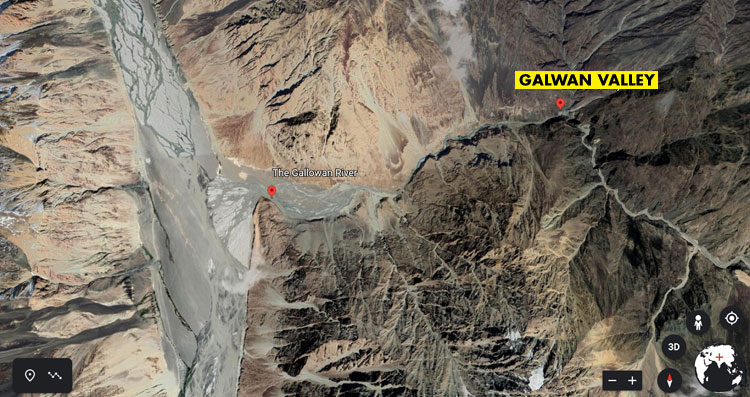
The Indian Army and the PLA had been engaged in the standoff in Pangong Tso, Galwan Valley, Demchok and Daulat Beg Oldie in Eastern Ladakh since May 5, 2020. As a result of talks between the senior functionaries of both the Indian Army and the PLA, after nearly a month and a half since the faceoff had begun, a degree of consensus had been reached on account of which, the process of de-escalation was under way in the Galwan Valley and limited disengagement was supposed to have begun in this sector. Earlier on, there were two relatively minor scuffles between Indian and Chinese soldiers, one at Pangong Tso on May 5, 2020 and the other at Naku La on May 9, 2020. As per sources in the Indian Army, these episodes were relatively minor in nature and were a result of aggressive behaviour on both sides. The Army Headquarters has confirmed that as theseto episodes had been resolved at the local level.
In the latest episode in the Galwan Valley now under scrutiny, China’s perspective of the episode, quite expectedly, is different from that of India. China has alleged that “on June 15, 2020, soldiers of the Indian Army violated the LAC twice to conduct illegal activities and provoked and attacked Chinese personnel which led to serious physical conflict between the two sides”. However, the stand-off at Pangong Tso remains a major issue of concern and is expected to take longer to be resolved.
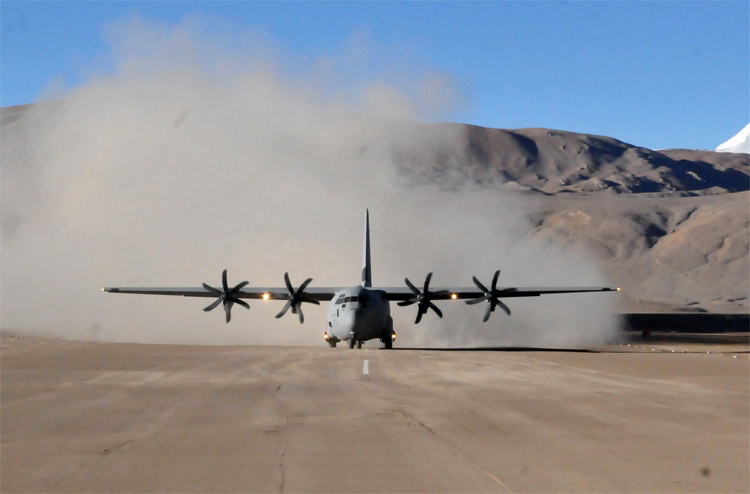
After the violent faceoff in the Galwan Valley, the Indian Army once again entered into a dialogue with the PLA at senior levels. Thereafter, Indian and Chinese troops have disengaged at the Galwan area where they had earlier clashed on the night of June 15, 2020. However, the Indian Army has assured the nation that it was fully committed to safeguarding the territorial integrity and sovereignty of the nation, come what may. The political as well as the military leadership of the country on their part, paid homage to the 20 servicemen who sacrificed their lives in service of the nation. In his personal message, Prime Minister NarendraModi said that “the sacrifice by the martyrs would not go in vain”. The subtle message for China is that India is prepared to take appropriate retaliatory action should China dare to violate the Line of Actual Control (LAC) again.
The nation needs to be more concerned about the overall strategic and economic equation with China which have been destabilised considerably in the wake of the COVID-19 pandemic.
The LAC which is supposed to be the border between India and China, runs from Western Ladakh and Kashmir, to the central sector Uttarakhand and Himachal Pradesh and then on to Eastern part of India i.e. Sikkim and Arunachal Pradesh. Running through glaciers, snow bound deserts, mountains and rivers, the LAC is more than 4000 km long and has always remained a major cause of tension between India and China. Incursions across several parts of the LAC into Indian territory by Chinese soldiers, is a frequent occurrence. This is primarily because in several segments, the LAC is not clearly demarcated resulting in differing perceptions of both India and China of its alignment. Also, China has frequently attempting to alter the status quo ante with regard to the LAC. Tension over the LAC has become worse in recent years especially since the time India started developing military infrastructure along the LAC in response to China’s defence build-up and deployment of troops.
One particular factor that appears to have escalated the stand-off in the Galwan Valley is the 255 km long Darbuk-Shyok-Daulat Beg Oldie (DSDBO) road that India is building to connect Leh to the Karakoram Pass. This road is of immense strategic significance for India as it passes through the Galwan Valley which is close to China and connects the region to the advanced landing ground (ALG) at Daulat Beg Oldie which is available for use to the Indian military.
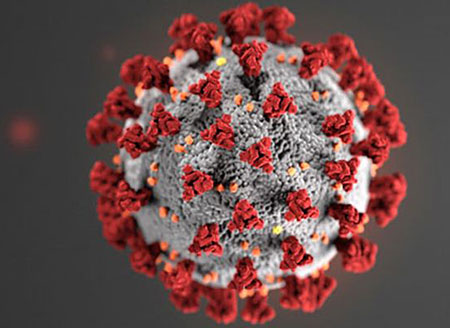
In the final analysis, even though the recent faceoff in Galwan Valley has become a subject of intense debate and considerable political acrimony within the country, the nation needs to be more concerned about the overall strategic and economic equation with China which have been destabilised considerably in the wake of the COVID-19 pandemic. While trying to resolve a minor tactical issue of faceoff in the Galwan Valley, India must not fail to see the bigger picture. Experience so far in dealing with China has shown that it cannot be trusted. This will be a major hurdle for India in its effort to achieve a state of peace and tranquilly along the LAC.





